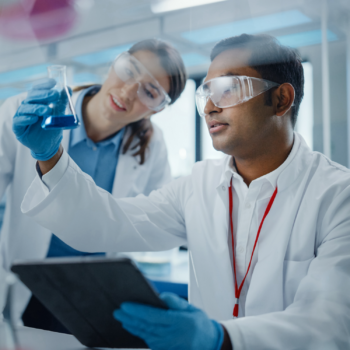The actual yield of a reaction is the actual mass of the product obtained. The predicted yield is the amount of the product we would expect to produce. Percentage yield is a measure of the actual yield compared to the predicted yield of the product.
The percentage yield could only be 100% as long as the reaction goes to completion and no product is lost during the process. Of course, in reality, we always lose some product mass during the reaction so reactions will not have a percentage yield of 100%. The loss in mass of product may occur during the process of heating, filtration or evaporation.
You may be required to calculate the percentage yield for any reaction using the equation below:
The steps in the method used to calculate percentage yield are outlined in the worked example below.
Example
Nitrogen gas and hydrogen gas react together in the Haber process to produce ammonia gas. Assuming that an excess of nitrogen reacts with 150g of hydrogen, calculate the percentage yield of the reaction.
1. Write the balanced symbol equation for the reaction:
2. Calculate the number of moles of hydrogen gas that reacted:
Number of moles of hydrogen gas = mass of hydrogen gas
Molar mass of hydrogen gas = 120g/3 x 2 = 20 moles of hydrogen.
3. Use the mole ratio and calculated number of moles of hydrogen to work out how many moles of ammonia should have been produced:
3 moles of hydrogen form 2 moles of ammonia according to the chemical equation. Therefore 20 moles of hydrogen will form 20 x (2/3) moles of ammonia = 13.3 moles
4. Use the calculated moles of ammonia to calculate the mass of ammonia that should have been produced. This is the theoretical yield of ammonia:
Mass of ammonia = number of moles of ammonia x molar mass of ammonia
Mass of ammonia = 13.3 x (2x 17) (as there are 2 moles of ammonia in the equation)
Theoretical mass of ammonia = 453.3g
5. Insert the calculated theoretical yield into the percentage equation:
Percentage yield = 150g/453.3g x 100
Percentage yield = 33.1%
Key terms
Predicted yield – the amount that is expected if nothing is lost in the reaction process.
Actual yield – the amount of product that is found.

Interested in a Chemistry GCSE?
We offer the Edexcel GCSE in Chemistry through our online campus.









